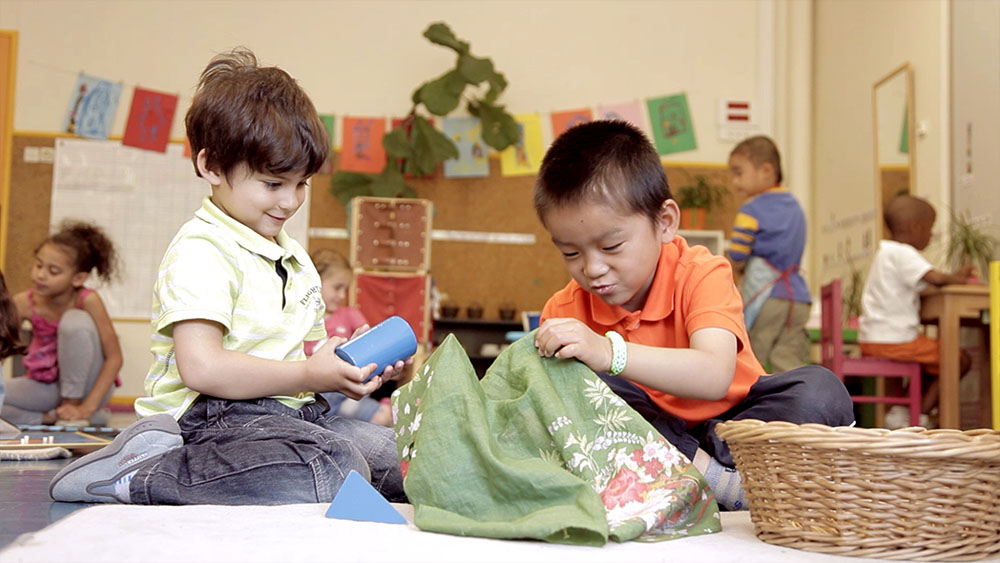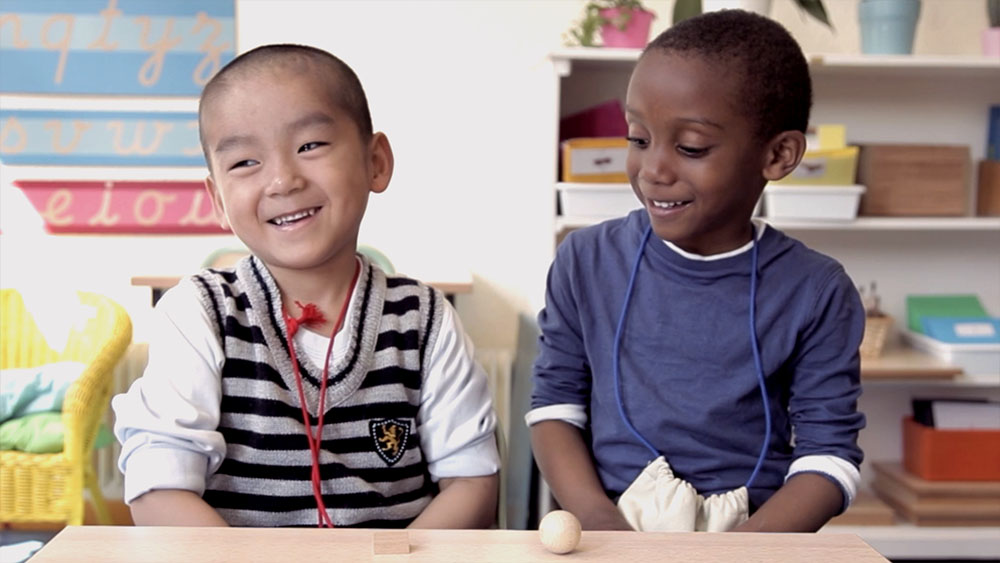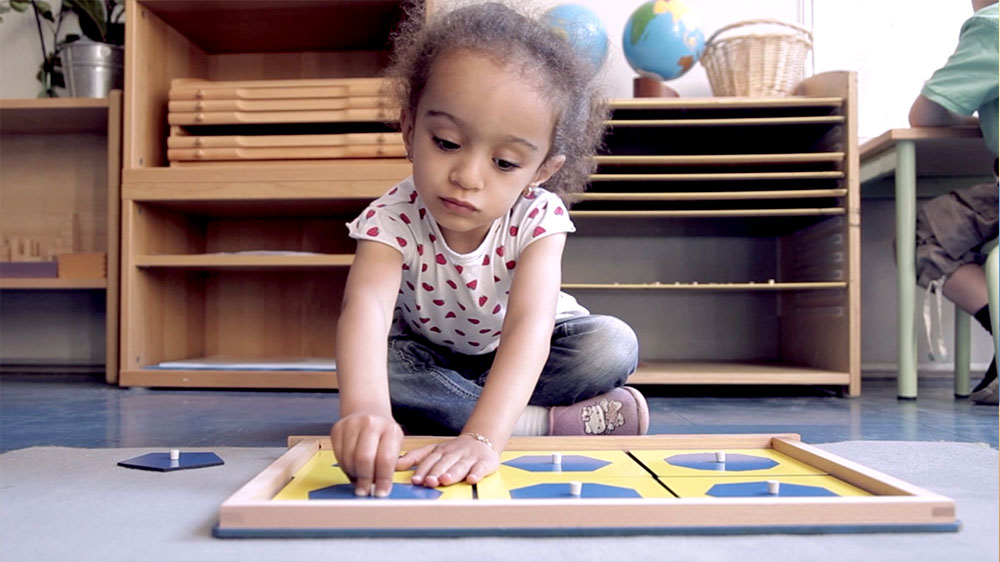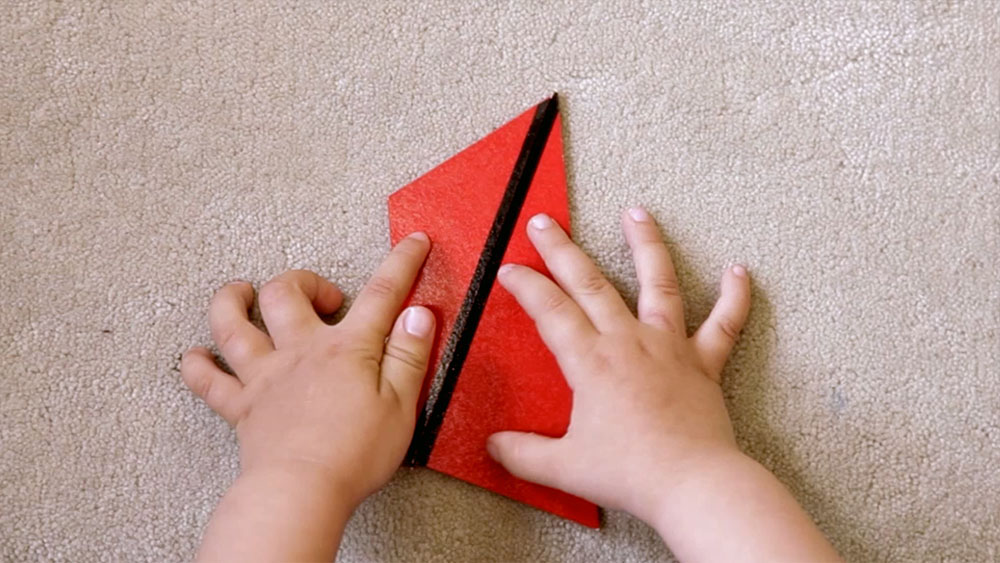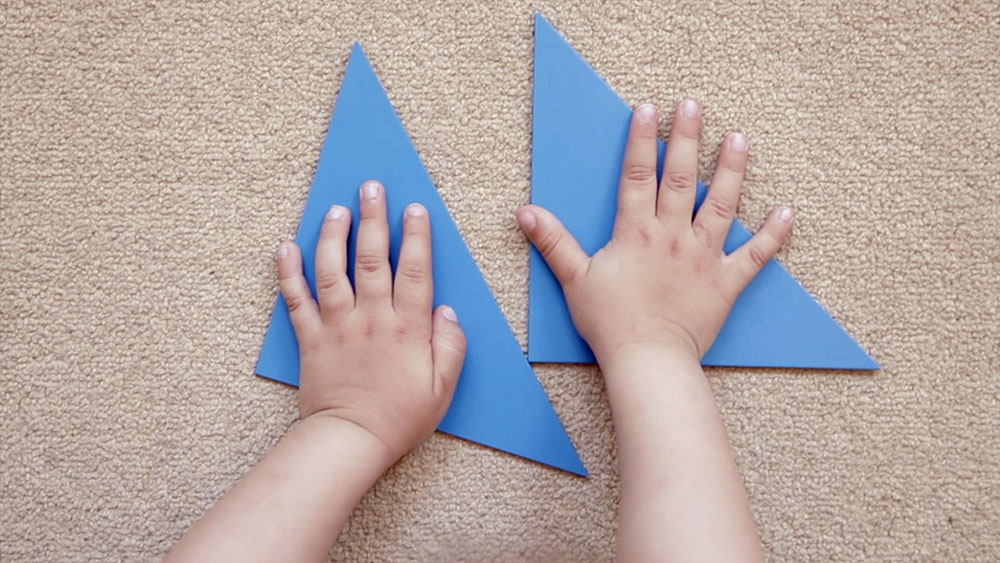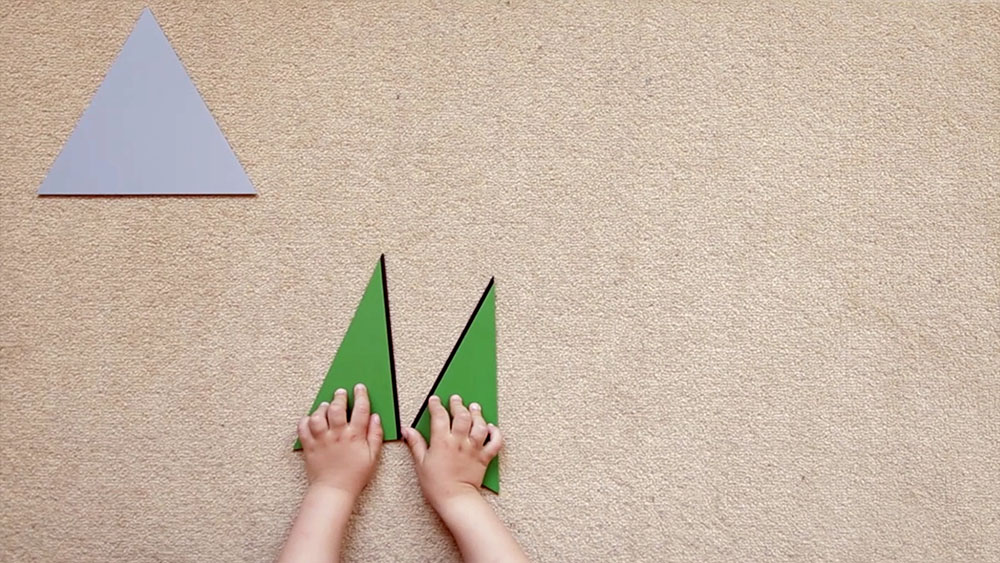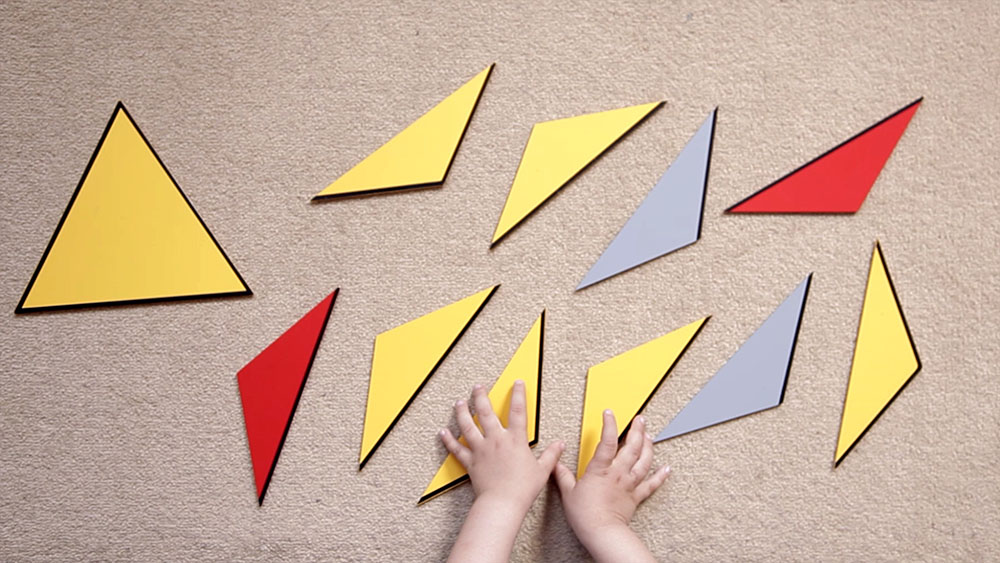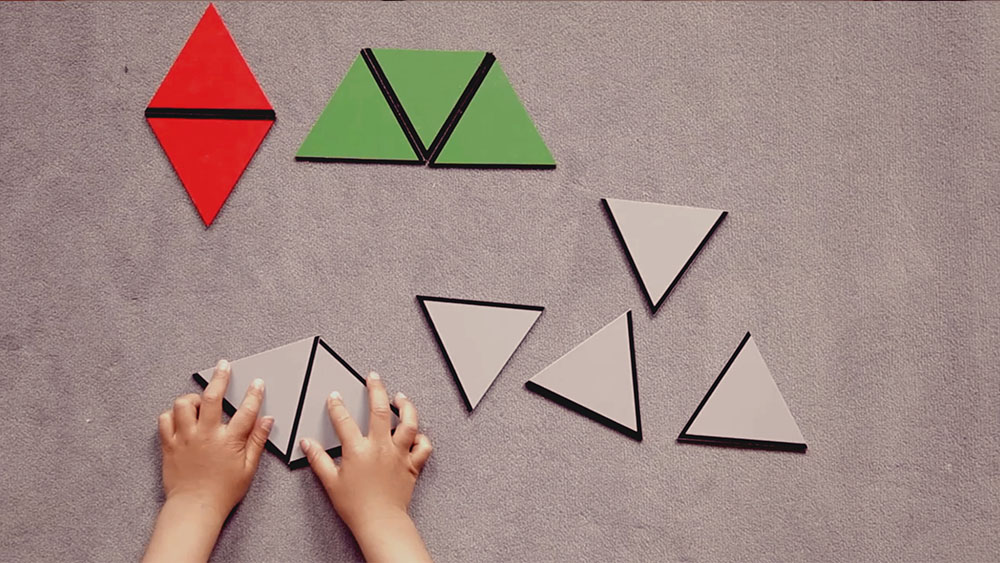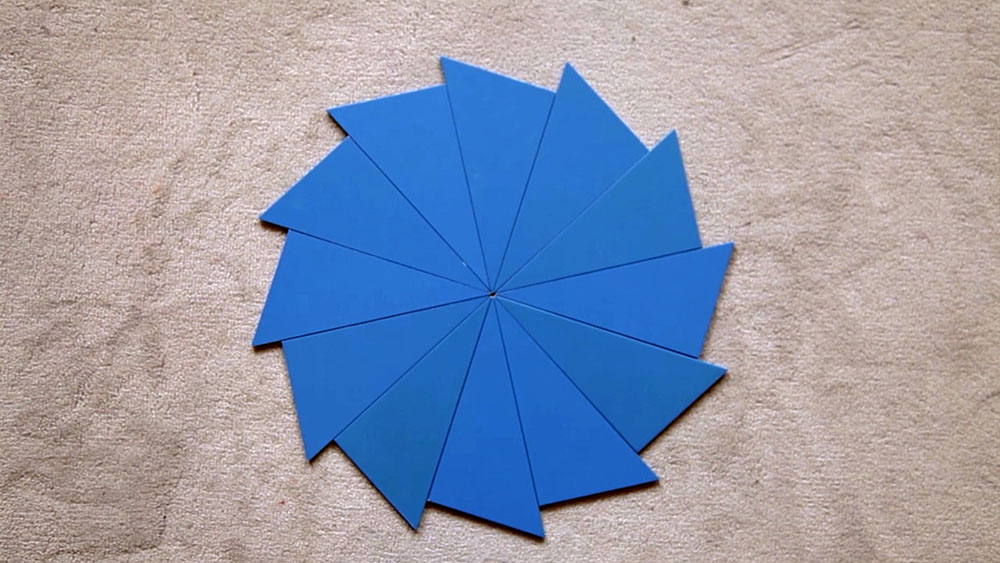Geometry
Everything around us is geometrical: buildings, the majority of objects, etc. It is therefore exciting for children to have the chance to appropriate for themselves the shapes they perceive in their environment by handling them and giving them names. They can then ‘reinterpret’ the external world and speak about it with greater precision. They notice, for example, that windows are rectangular, that a chicken egg is ovoid and that chair legs – those designed in the style of the 1960s – trace out the shape of a trapezium.
This new ‘expert’ way of apprehending the world often appears suddenly in children as if a light bulb had been switched on in their head. We can of course help them to become aware of these details by drawing their attention to them, but most make this discovery on their own and their pleasure in so doing is all the greater.
To help the children appropriate for themselves the most common flat shapes and solids, we once again selected materials designed by Drs Séguin and Montessori. These materials possess the great advantage of isolating a single objective per activity, thereby affording optimal cognitive clarity: the children’s attention is focused on a single item of knowledge, which facilitates the learning process.
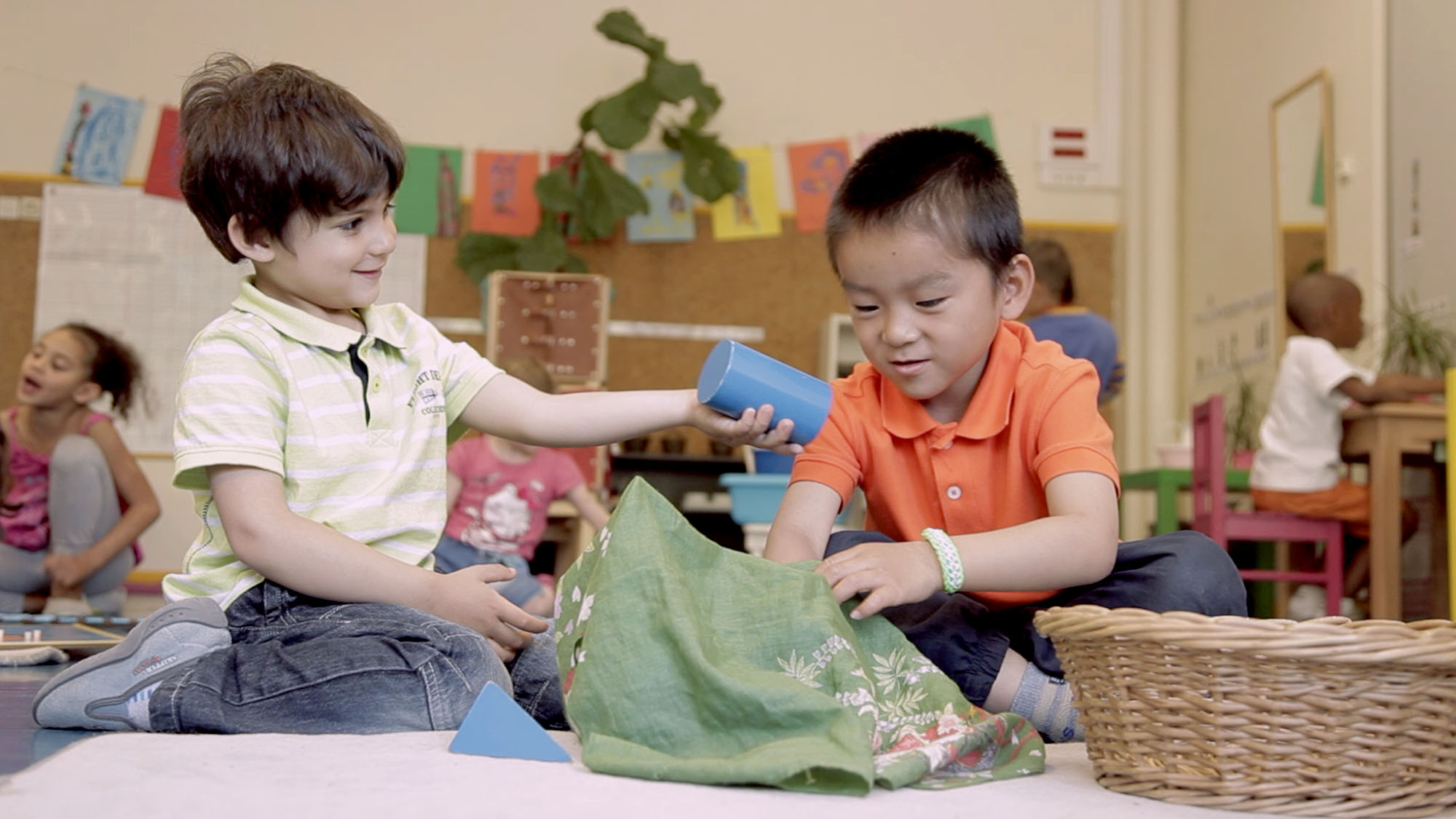
You should by no means regard the activities presented below as being definitive. On the contrary, we hope that they will serve as a point of departure for you, providing a source of inspiration and a platform for experimentation – make them your own! We also encourage you to supplement these suggestions with any other activities which you consider to be appropriate.
Appropriating the most common flat shapes & solids
Using the blue geometric solids (video below), the children can handle and explore: the sphere, the cone, the cube, the ovoid, the ellipsoid, the prism, the square pyramid, the triangular pyramid and the cylinder. They very quickly learn these names with the help of several three-stage lessons, and they are especially fond of the most complicated names: their questing eyes shine at the mention of ‘ellipsoid’, ‘ovoid’, ‘square pyramid’ and ‘triangular pyramid’.

Once these names have been acquired, the children enjoy working in pairs and plunging their hands into bags containing small solids (video below). They each place a bag around their neck, put their hands in their bag and then ask each other to take out the solid which they name. A third child can also do the naming, asking their two classmates to take out the solid named as quickly as they can: ’First to find the prism!’ The two children hunt eagerly in their bag and one of them will be the first to take out the prism and brandish it proudly.
In parallel, with the help of the Geometry Cabinet (video below), children can from the age of three handle all kinds of flat shapes: one drawer contains various sizes of circle, another various rectangles, another various triangles (equilateral, right-angled isosceles, obtuse isosceles, acute isosceles, right-angled scalene, obtuse scalene, acute scalene), another quadrilaterals (right-angled trapezoid, isosceles trapezoid, parallelograms, rhombus), another polygons (pentagon, hexagon, heptagon, octagon, nonagon, decagon) and a final drawer containing varied shapes such as an ellipse, an oval, a curvilinear triangle and a quatrefoil. The children can choose whichever drawer they please, take the flat shapes out of their container and put them back there. We gradually share the names of these shapes with them through various Séguin three-stage lessons.
We can also ask the children to construct regular shapes like squares, rectangles, parallelograms, rhombuses, trapeziums and equilateral triangles, as well as hexagons with various types of triangle - isosceles, equilateral, scalene; right-angled, obtuse and acute. To explore these possibilities, six boxes of ‘Constructive Triangles’ can be placed at the children’s disposal.
The activities we have presented here will be satisfying for most children up to the age of 4½. To take things further, you could arrange ‘Geometric Walks’ in town during which the children are asked to spot and/or photograph geometric shapes. Don't hesitate to share your ideas & the activities you have discovered on the forum!
If you want to view more detailed presentations of these activities, please go to the practical underpinning page.


